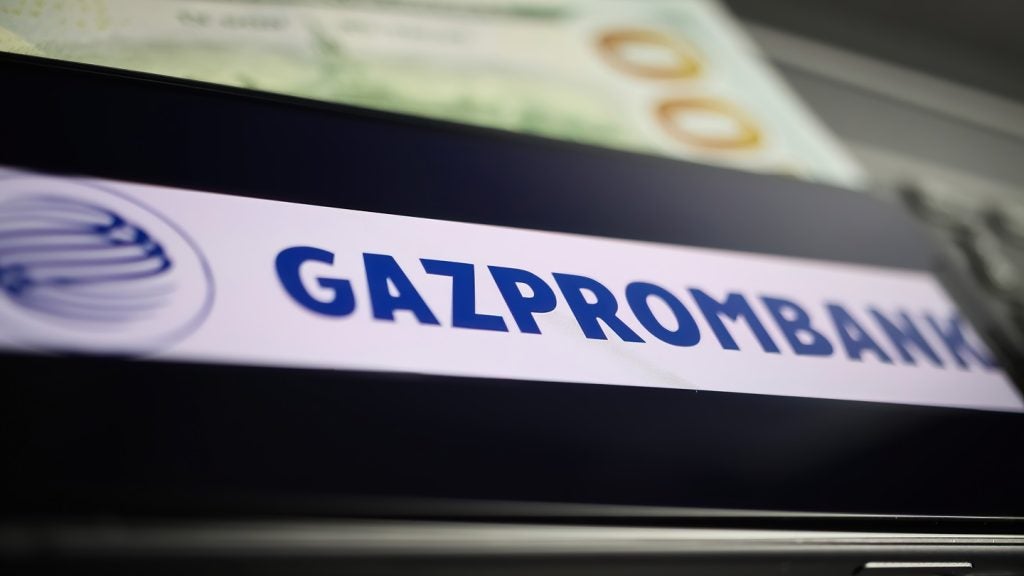Colafrancheschi, head of online banking at UniCredit Banca, about
the group’s online distribution strategy. The Italian group has
been overhauling its web proposition to take advantage of the
increasing role the internet is playing in Italian
society.
 UniCredit Banca, the domestic retail division of UniCredit,
UniCredit Banca, the domestic retail division of UniCredit,
is to overhaul its web presence next year as the bank begins a new
era following the integration of Capitalia, the Italian rival
bought for $29 billion in 2007.
Despite recent attention being focused on its existing exposure
and future expansion plans in Central and Eastern Europe, retail
banking in Italy remains the core of UniCredit’s business strategy,
particularly at a time when the bank’s asset management and
investment banking divisions are suffering from severe profit
decreases as a result of the current market ‘dislocation’.
The Capitalia merger further solidified the power of what was
already an Italian retail banking giant, giving UniCredit a
domestic base of over 5,000 branches and more than 10 million
customers. But it also created a headache in that the bank had to
integrate the three separate retail segments of Capitalia: Banca di
Roma, Banco di Sicilia and Bipop-Carire.
Alessandro Colafrancheschi, head of online banking at UniCredit
Banca, told RBI the bank’s new overarching web portal was
designed very much with such concerns in mind, admitting that some
customers may find the new structure “a little bit strange” at
first.
Accordingly, the new website, designed in the manner of UK bank
portals, will also use “new techniques of web marketing” such as
behavioural targeting and multivariate testing, which will see the
website undergo further changes in accordance with customer
preferences.
How well do you really know your competitors?
Access the most comprehensive Company Profiles on the market, powered by GlobalData. Save hours of research. Gain competitive edge.

Thank you!
Your download email will arrive shortly
Not ready to buy yet? Download a free sample
We are confident about the unique quality of our Company Profiles. However, we want you to make the most beneficial decision for your business, so we offer a free sample that you can download by submitting the below form
By GlobalDataThough figures from traffic-tracker Nielsen Online show the bank
grew its online banking customer numbers by 49 percent in 2007,
making it the fastest growing bank website in Italy,
Colafrancheschi acknowledges that “we have been unable to do any
major innovation this year, because of the integration – all our
resources and efforts have been focused into Capitalia”.
That integration has resulted not only in the migration of the
three former Capitalia banks onto the UniCredit IT platform, but
also a major reorganisation of the bank’s domestic network. As of 2
November, the bank’s retail division has been divided along
geographical lines, with UniCredit Banca in the northern part of
Italy and UniCredit Banca di Roma in central and southern Italy.
Sicilian customers will be covered by Banco di Sicilia. Customers
have been redistributed accordingly.
Colafrancheschi said: “If you were a customer living in Milan
but you formerly had an account with Banco di Sicilia, you have
been moved to UniCredit Banca.”
The reorganisation meant UniCredit “paying a lot of attention to
and investing heavily in its online operations… We had to deal
with a new complexity. We have three different websites for three
different banks, and then we have a ‘superwebsite’ for the whole
retail banking division in Italy.”
Colafrancheschi continued: “This is a little bit strange in the
eyes of the customers, so we had to pay a lot of attention in terms
of build, information architecture and a web design that was simple
to understand and effective to deliver our offer online.”
The bank is also considering allowing consumers to publish
feedback on the site itself as part of its efforts to further
engage customers and introduce a social media, Web 2.0 element to
is web proposition. The new site is expected to launch in the first
quarter of next year, with a revamp of the secure online banking
website to follow in mid-2009, Colafrancheschi said.
UniCredit’s public website currently has 4 million unique
visitors per month, with its online banking customer numbers
totalling approximately 2 million – 1.2 million of whom actively
make payments online every month. This makes the online bank the
largest in Italy. Colafrancheschi concedes that rival Intesa
Sanpaolo may have more online customers but “they are not, as far
as I am aware, all on one platform”.
Wedded to branch-based banking
Regardless, UniCredit’s 95 percent increase in online customers
between 2005 and 2007 significantly outperformed the Italian
average of 62 percent. Both figures are an achievement in a country
that is still somewhat wedded to its branch-based banking.
 Speaking at RBI’s
Speaking at RBI’s
Innovations conference in Singapore in October, Colafranceschi
revealed that some 89 percent of Italians are still active users of
branch-based banking, a figure considerably higher than those seen
in other EU countries such as France or the UK.
The online banking head believes that those strong growth rates
will continue, for UniCredit at least, given the imminent debut of
the “much more effective” retail website. The site’s users already
account for 20 percent of total retail banking online activity in
Italy, he added.
As such, customer feedback remains an indispensable part of the
bank’s web activity. UniCredit received 50,000 responses to its
quarterly online questionnaire in 2007 and also accepts customer
comments on its site, though these are not publicly viewable. The
new aspects of the website will mark the next step in the portal’s
evolution from a distribution platform into a key pillar in the
bank’s domestic banking strategy.
Though the bank reported a 54 percent year-on-year decrease in
net profit for the third quarter of 2008, the retail division held
up well, with pre-tax profit rising by 8.5 percent on the year. On
a year-to-date basis, however, the retail division has seen a 3.2
percent fall in pre-tax profit due to higher loan write-downs.
The figures also illustrated the extent to which Italy still
dominates the bank’s retail outlook: domestic retail results
accounted for 75 percent of operating income and 82 percent of the
overall operating result.
Strong product growth was seen in the current account segment,
with 141,300 net new accounts added thus far in 2008. UniCredit
also opened over 550,000 Genius packaged accounts, aimed at
university students, over the same period.
A quarter of a million of these were opened by former Capitalia
customers, suggesting that the integration process is running
relatively smoothly. On a purely IT-related basis, Colafranceschi
himself commented that the process “is developing very well. We
haven’t had any problems with this migration – the new platform is
very solid, very reliable.” Bipop-Carire was migrated onto the
single system in April, followed by Banca di Roma in August and
Banco di Sicilia in October.
Products remain a central facet of UniCredit’s online offering.
Around 5 percent of all current accounts sold by the bank are now
done so via the web, while loans and mortgages constitute “a major
driver” of cross-selling sales. Almost one in four mortgages
delivered by UniCredit in 2007 was done so via a customer
registering interest online.
The bank has also enjoyed success with the launch of MoneyBox,
an online only retail investment product with a favourable tax
structure designed to produce above-market returns on cash
balances. The product is “very, very popular”, Colafrancheschi
said.
UniCredit benchmarks its online banking performance against
European peers such as Nordea and Lloyds TSB, and also draws
parallels with the latter bank through its e-security measures.
Both institutions use a fob device to produce one-time passwords
for online banking customers, and both were debuted in 2005.
At the time, the upsurge in phishing activity – the sending of
fraudulent communications purporting to be from legitimate online
institutions in an effort to harvest customer sensitive information
– seen in the US and the UK made UniCredit take notice.
“We decided to invest in advance because we were looking at the
UK and the US where phishing events were very frequent – so we
thought ‘if it is happening there it will probably come to Italy
too’,” Colafrancheschi said.
When this did occur, in June 2005, UniCredit was able to quickly
roll out its pilot scheme across the whole customer base.
“We were able to give the marketplace a very strong message in
terms of control and reaction, and in terms of protecting our
customers from online threats,” he added.
Other initiatives, which are now becoming more common across
Europe, include offering customers free anti-virus software as well
as giving them the opportunity to scan their computers for malware
while browsing the UniCredit online banking site, via a partnership
with Symantec.
But the larger IT processes, such as the updating of UniCredit’s
systems as part of the Capitalia integration, are being done
in-house through the bank’s Global Banking Services division.
Moving forward, Colafranceschi believes that 2009 will be the
year in which the bank begins to utilise Web 2.0 features. The
interactive possibilities, he suggests, are of fundamental
necessity to a 21st century financial institution.
“I believe that we as a company can learn much more from our
customers than we can understand from user labs or focus groups,”
Colafrancheschi said.
“And it is much better to listen in our home, if you like,
rather than having customers talking somewhere else on the web. You
cannot hide altogether – the web is a very democratic place.
“We have to significantly improve the way we deal with our
customers and prospects online, and looking at the numbers I would
say we are making a good job of that”.








